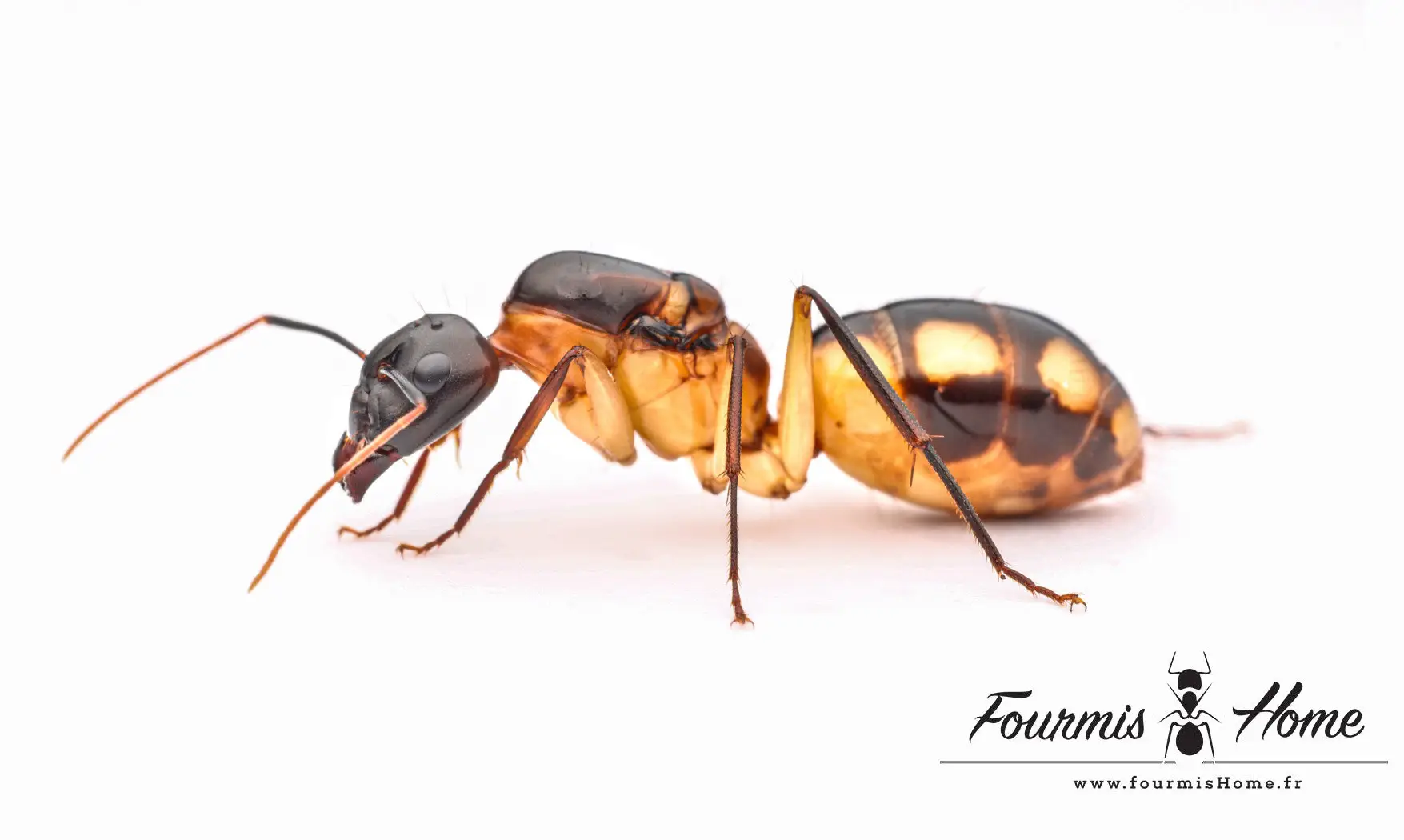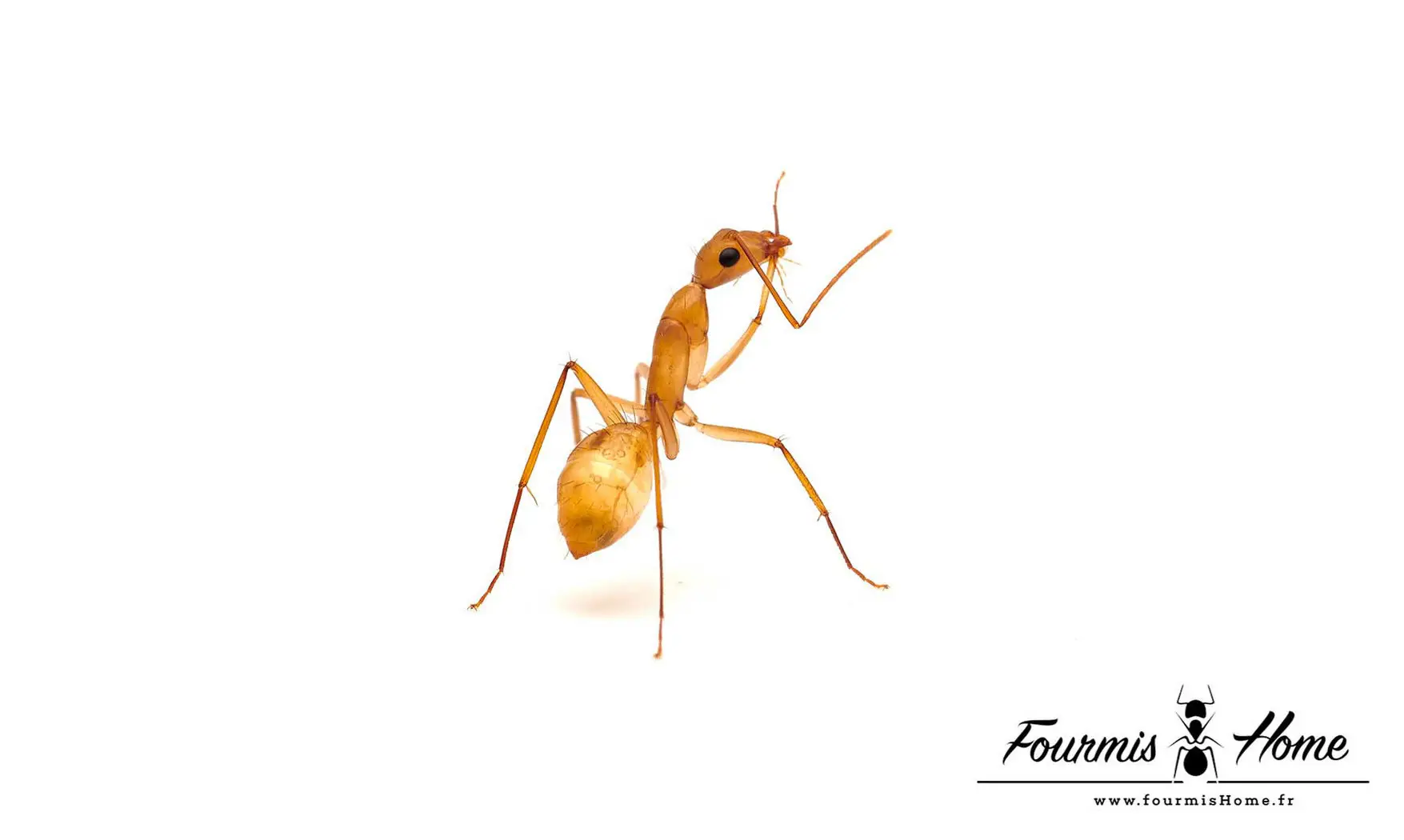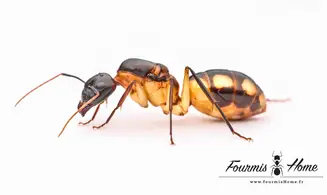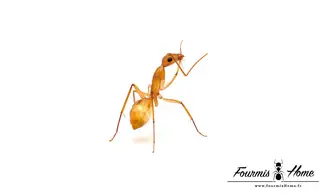



Camponotus maculatus
Reference : CFOUR-045
119.90€
Available
Latin name: Camponotus maculatus
Taxonomy: Subfamily: Formicinae, Tribe: Camponotini
Breeding level: Beginner, just provide a good temperature
Geographic distribution: Africa, Greece, Southwest Asia.
Habitat: Prefers steppe and dry forest.
Colony form: Monogyne
Queen: Size: 16 - 17mm Color: Dark brown to black head, Yellowish chestnut, Dark brown to black pettre with yellow spots or stripes depending on the variety.
Female workers: Size: 6 - 10mm Color: Dark brown to black head, Yellowish chestnut, Dark brown to black pettre with yellow spots or stripes depending on the variety
Major: Size 13 - 15mm Color: Dark brown to black head, Yellowish chestnut, Dark brown to black pettre with yellow spots or stripes depending on the variety
Male: Size: 11mm Color: Reddish yellow
Food: Honeydew and insects: like flies, mealworms, mosquitoes and small crickets; also fruits
Humidity: Hunting area: 30 - 50% Nest: 50 - 60%
Temperature: Hunting area: 18 - 30 ° C Nest: 24-28 ° C
Hibernation: No, but winter break is recommended from November to March at room temperature
Nest type: All types of nests will suit them, tube foundation and then dry nest with a trough in the hunting area.
Description: Camponotus maculatus are among the largest and most beautiful ants in Africa. They are very aggressive and defensive. but attacks only when disturbing the nest with very powerful mandibles.
Development: Swarming from March to July depending on the country of origin
Foundation: Set in a cloister (without food) Development: 45 days from egg to worker (depending on temperature)
Size of the colony: 10,000 individuals, the queen can reach the age of 20 years.
Taxonomy: Subfamily: Formicinae, Tribe: Camponotini
Breeding level: Beginner, just provide a good temperature
Geographic distribution: Africa, Greece, Southwest Asia.
Habitat: Prefers steppe and dry forest.
Colony form: Monogyne
Queen: Size: 16 - 17mm Color: Dark brown to black head, Yellowish chestnut, Dark brown to black pettre with yellow spots or stripes depending on the variety.
Female workers: Size: 6 - 10mm Color: Dark brown to black head, Yellowish chestnut, Dark brown to black pettre with yellow spots or stripes depending on the variety
Major: Size 13 - 15mm Color: Dark brown to black head, Yellowish chestnut, Dark brown to black pettre with yellow spots or stripes depending on the variety
Male: Size: 11mm Color: Reddish yellow
Food: Honeydew and insects: like flies, mealworms, mosquitoes and small crickets; also fruits
Humidity: Hunting area: 30 - 50% Nest: 50 - 60%
Temperature: Hunting area: 18 - 30 ° C Nest: 24-28 ° C
Hibernation: No, but winter break is recommended from November to March at room temperature
Nest type: All types of nests will suit them, tube foundation and then dry nest with a trough in the hunting area.
Description: Camponotus maculatus are among the largest and most beautiful ants in Africa. They are very aggressive and defensive. but attacks only when disturbing the nest with very powerful mandibles.
Development: Swarming from March to July depending on the country of origin
Foundation: Set in a cloister (without food) Development: 45 days from egg to worker (depending on temperature)
Size of the colony: 10,000 individuals, the queen can reach the age of 20 years.

